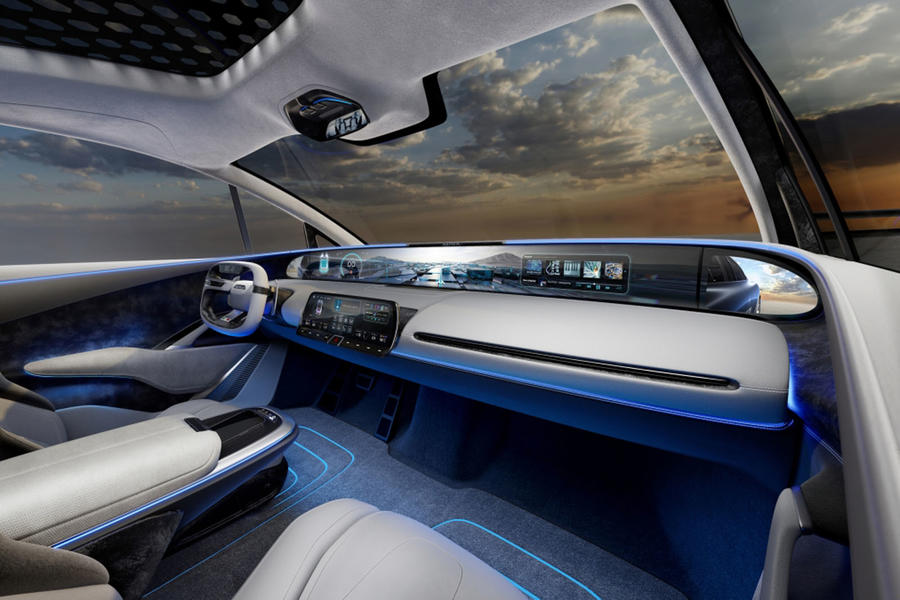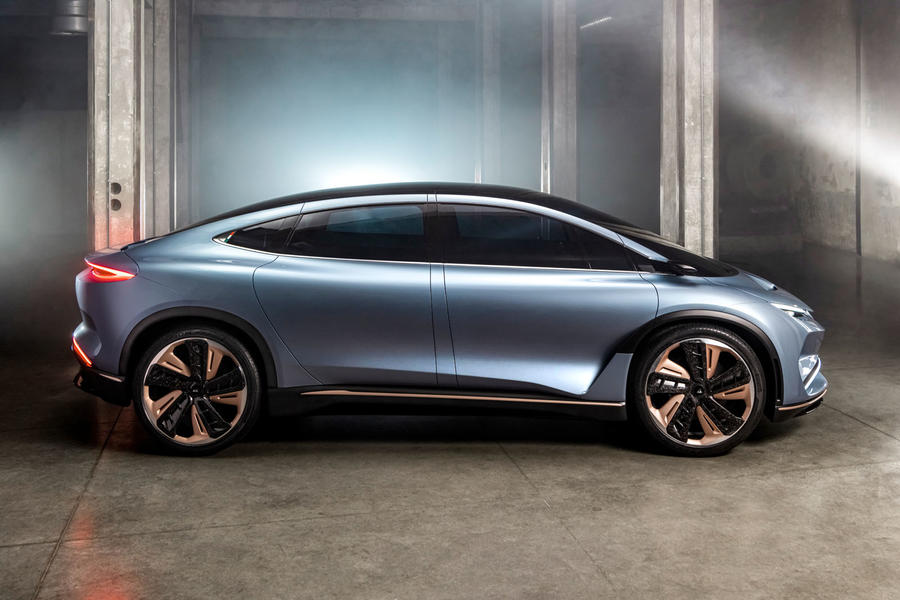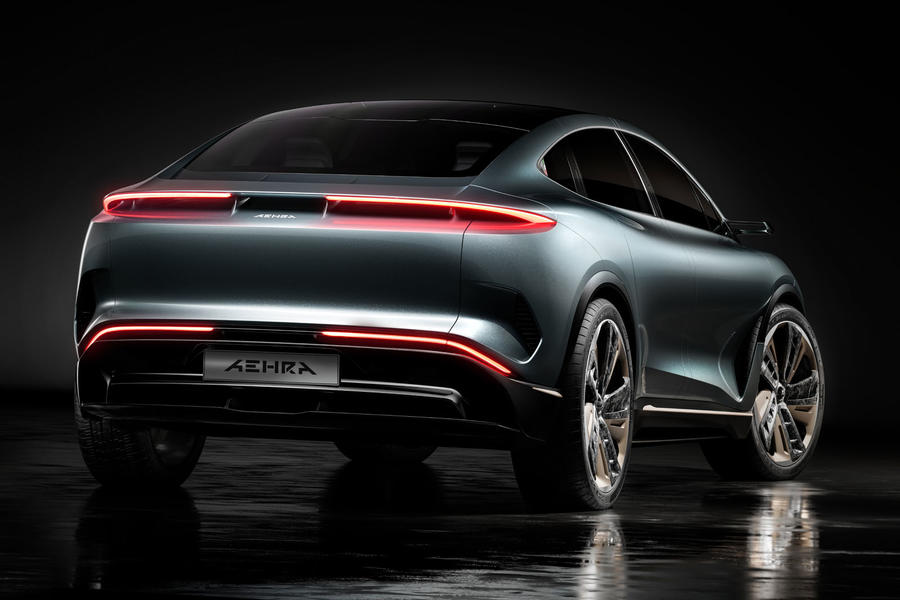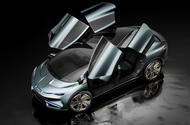The £155,000 Aehra SUV is planned to enter production by early 2025
Hazim Nada explains how the new firm will compete with historic marques on cost
It is generally accepted that Italian sports cars are louder, more outlandishly designed and all-round more flamboyant than their contemporaries from overseas.
It follows that the leaders of their makers have often been charismatic – maybe even dogmatic – enough to have attracted cult followings in their own right.
Ferruccio Lamborghini, Enzo Ferrari and Horacio Pagani, responsible for some of the most pivotal cars and sensational headlines of their eras, were or are sufficiently charismatic and outspoken to have transcended the community of automotive enthusiasts and left an indelible mark on society as a whole.
Hazim Nada, founder and CEO of Italy’s latest sporting car maker, doesn’t quite fit the mould. His nascent brand, Aehra, has already made quite the splash with the reveal of its maiden model – an ultra-aerodynamic, super-luxury SUV to rival the Lotus Eletre – and intriguing plans for Porsche Taycan and Maserati Granturismo equivalents to follow closely behind. When he arrives for our long-anticipated meeting in London (a whistle stop on a whirlwind extravaganza of hand-shaking with key stakeholders and collaborators in his growing firm), it quickly becomes clear that this is a CEO who is more than happy for his products to do the shouting.
Read more: Aehra SUV: £155k BMW iX rival to begin road testing in 2023
Faced with the tricky question of why he sees fit to launch an ultra-premium sporting car brand in this most inhospitable of market climates, he answers rationally: “In terms of the current time frame, I think it’s challenging for everybody. The EV transition is going ahead; I don’t see that a U-turn will happen. It’s beneficial to us in two ways: we already see that there is availability of supply that would have been tighter in discussions a few months ago, and the producers and manufacturers that have come out with models over the past few years have faced difficulties in ramping up. And now that there’s a downturn, the demand is going to slow down a little bit. So generally, it’s a strategic advantage for us.”
There’s no bluster here, just bold ambition – perhaps verging on optimism – presented candidly and with full view of the nuances of today’s circumstances. You could call it humble, or at the very least an exhibition of commendable self-awareness – hardly a quality often associated with the most vocal personalities in this rarefied sphere of £150,000-plus cars. And this from the leader of a firm whose goal is to be “intensely focused on creating a driving experience that is always extraordinary”.

Where Aehra’s cars will be most obviously differentiated from established rivals is in their technical make-up, necessarily comprised of componentry supplied by third-party firms.
“We’re doing an integrated system, not going and redesigning an inverter, redesigning an axle or redesigning a gearbox and whatnot,” says Nada. “It’s the same for the HVAC. Our job is primarily integration, not development. That’s the key engineering approach we’re taking.”
What that means is that not only will Aehra’s development costs comfortably undercut those of today’s struggling EV start-ups, but also that it will be able to bring its cars to market much quicker – and with confidence from the fact they’re built using proven parts.
“The big engineering side now is more external,” explains Nada. “It’s more about the adaptation of each subcomponent to our platform needs. So for example, an e-axle will need to have a specific type of connector to the transmission and wheels, and that needs to be adjusted to the specific package that we have regulating battery management systems to our own needs.
“So we’re obviously taking everything as off-the-shelf as possible. Still within that there are development needs, but it’s a shorter time frame of development than developing the proper key component from the onset on a clean sheet.”
Of course, that begs the question of how Aehra can charge top dollar for an amalgamation of hardware that’s already available elsewhere.

Nada is quick to retort: “It’s not really available in a cheaper product; it’s available in similarly priced products. I could tell you, for example, that one of the key suppliers we’re in discussions with for one of the key components is being used by Maserati. So it’s within the same, if not a slightly higher-priced, reality.”
For now, the bigger question of who will supply what remains unanswered. Autocar understands battery-supply discussions are well advanced and a partner could be named within weeks, while “one supplier has something that comes close” to what Aehra wants of an infotainment screen, but Nada is keeping all names close to his chest.
Buying parts and systems in from elsewhere is a fundamental strand of the Aehra business plan. Ultimately, Nada reckons the cost of bringing the Aehra SUV and its saloon sibling to production at scale (25,000 per year apiece by mid-2027) will be around €750 million (£662m) – an astoundingly ambitious estimate for a company that has yet to name most of its suppliers, develop production tooling or even pick up the keys to a factory.
But Nada says: “Even if we internalise the final assembly, the type of assembly we’re doing is very asset-light; we’re receiving practically all the components ready. We’re doing the Lego approach even for the chassis and structure.”
It’s a familiar approach: other newcomers, like Fisker and Scout, have also turned to third-party manufacturers and are looking to build EVs on existing platforms to keep overheads to a minimum and speed up development times.
However, Nada isn’t ruling out Aehra building the cars itself, saying: “We’re in discussions with the regions of Lombardy and Romagna for sites. If we see that such a site – and especially the quality control overburden – is too much, we will then externalise to a contract manufacturer for the entire process.”

Whoever builds the cars, big dreams need big names, and Nada has been building a small but star-studded group of executives (see below) to ensure Aehra matches the best that Bentley, Lamborghini et al have to offer in the design, engineering and technology stakes.
“Within about six months from today,” he says, “the engineering side needs to balloon to about 20-30. On the design side, we will need to add two more people and we’re finished.”
Indeed, the Aehra SUV (yes, that’s its final name) has been revealed in production form and the saloon is set to be unwrapped in the coming months, with the highly anticipated GT halo car to follow by the end of the year.
Read more: Aehra set to launch 800bhp ‘supercar saloon’ in 2025
It’s difficult not to get excited about the prospect of a family of new enthusiast-focused cars at a time when it seems that such things are fewer and further between than ever before. Making EVs is hard, for sure (look no further than the struggles of Arrival, Faraday Future, Lordstown and Rivian, to name a few), but what if you’re not strictly making them? Then it becomes a lot easier to imagine a future, and it’s entirely possible that rational can breed radical, after all.
Aehra’s all-star crew
Franco Cimatti, chief engineer
A decorated alumnus of Ferrari’s engineering department, Cimatti has over 100 patents to his name and led development of platforms for such icons as the 360 Modena, 612 Scaglietti and 458 Italia. He then moved to Lotus to develop modular EV platforms.
Filippo Perini, chief designer
Having cut his teeth in Alfa Romeo’s design department, Perini became chief exterior designer at Audi in 2003 before moving to Lamborghini in 2004 and putting his name to the Aventador, Huracán and Urus. More recently, he spent three years with Italdesign before a brief stint with Genesis.
Stefano Mazzetti, head of purchasing and procurement
Charged with building a supply chain and partner network that support Aehra’s asset-light ambitions, Mazzetti draws on engineering experience at Brembo (where he headed up development for Lamborghini and Porsche systems) and his time at Ferrari, where he most recently was charged with evaluating potential suppliers.
Source: Autocar
